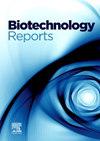Integration of phytochemical profiling and computational approaches to evaluate the neuroprotective potential of Nardostachys jatamansi in Alzheimer's disease
Q1 Immunology and Microbiology
引用次数: 0
Abstract
Despite broad spectrum utility of Nardostachys jatamansi (D. Don) DC, little is known about the molecular processes that underlie its anti-Alzheimer action. To investigate the molecular targets and therapeutic potential of N. jatamansi for Alzheimer's disease (AD), we used Gas Chromatography-Mass Spectrometry (GC-MS), ADMET analysis, network pharmacology, differential gene expression analysis, molecular docking, and molecular dynamics (MD) simulations. The STITCH database was used for network creation and protein-protein interaction analysis, while Cytoscape was used for network visualization and Kyoto Encyclopedia of Genes and Genomes (KEGG) pathway enrichment and Gene Ontology (GO) for term enrichment. Additionally, to investigate the intermolecular interactions between the active chemicals and target proteins, molecular docking experiments were conducted using the Blind docking on the Achilles server. The stability of the PS1 gene complex with Spirojatamol, was further evaluated using MD simulations. With Spirojatamol showing the highest binding energy scores against PS1 (−6.9 kcal/mol), molecular docking confirmed the activity of this metabolite against AD targets PS1 and Spirojatamol formed a stable complex at 100 nanoseconds, according to additional investigation using MD simulations. Significant ligand-protein interactions were verified by binding free energy calculations using the MM/GBSA technique. The PS1-Spirojatamol complex had a binding energy of ΔG: −36.95 ± 5.00 kcal/mol. By focusing on several genes and pathways, involved in AD, this work reveals the molecular underpinnings behind N. jatamansi possible use in the treatment of AD.
整合植物化学分析和计算方法评估阿兹海默氏病的神经保护潜力
尽管Nardostachys jatamansi (D. Don) DC具有广泛的用途,但人们对其抗阿尔茨海默病作用的分子过程知之甚少。为了研究jatamansi对阿尔茨海默病(AD)的分子靶点和治疗潜力,我们使用了气相色谱-质谱(GC-MS)、ADMET分析、网络药理学、差异基因表达分析、分子对接和分子动力学(MD)模拟。使用STITCH数据库进行网络创建和蛋白-蛋白相互作用分析,使用Cytoscape进行网络可视化,并使用京都基因与基因组百科全书(KEGG)途径富集和基因本体(GO)进行术语富集。此外,为了研究活性化学物质与靶蛋白之间的分子间相互作用,我们在Achilles服务器上进行了盲对接实验。利用MD模拟进一步评价PS1基因复合物与螺贾他莫的稳定性。根据MD模拟的额外研究,Spirojatamol对PS1的结合能得分最高(- 6.9 kcal/mol),分子对接证实了该代谢物对AD靶点PS1的活性,Spirojatamol在100纳秒内形成稳定的复合物。通过结合自由能计算,利用MM/GBSA技术验证了显著的配体-蛋白相互作用。ps1 -螺贾他莫配合物的结合能为ΔG:−36.95±5.00 kcal/mol。通过关注与阿尔茨海默病有关的几个基因和途径,这项工作揭示了N. jatamansi可能用于治疗阿尔茨海默病的分子基础。
本文章由计算机程序翻译,如有差异,请以英文原文为准。
求助全文
约1分钟内获得全文
求助全文
来源期刊

Biotechnology Reports
Immunology and Microbiology-Applied Microbiology and Biotechnology
CiteScore
15.80
自引率
0.00%
发文量
79
审稿时长
55 days
期刊介绍:
Biotechnology Reports covers all aspects of Biotechnology particularly those reports that are useful and informative and that will be of value to other researchers in related fields. Biotechnology Reports loves ground breaking science, but will also accept good science that can be of use to the biotechnology community. The journal maintains a high quality peer review where submissions are considered on the basis of scientific validity and technical quality. Acceptable paper types are research articles (short or full communications), methods, mini-reviews, and commentaries in the following areas: Healthcare and pharmaceutical biotechnology Agricultural and food biotechnology Environmental biotechnology Molecular biology, cell and tissue engineering and synthetic biology Industrial biotechnology, biofuels and bioenergy Nanobiotechnology Bioinformatics & systems biology New processes and products in biotechnology, bioprocess engineering.
 求助内容:
求助内容: 应助结果提醒方式:
应助结果提醒方式:


